The Leading Edge: November 2021 Wind Energy Newsletter
In this edition, wind turbine blades lighten up, an NREL researcher helps collect "RAAW" wind turbine data, and an offshore wind transmission study launches.
News Stories
CoMET Takes Wind Turbines From Theory to Market
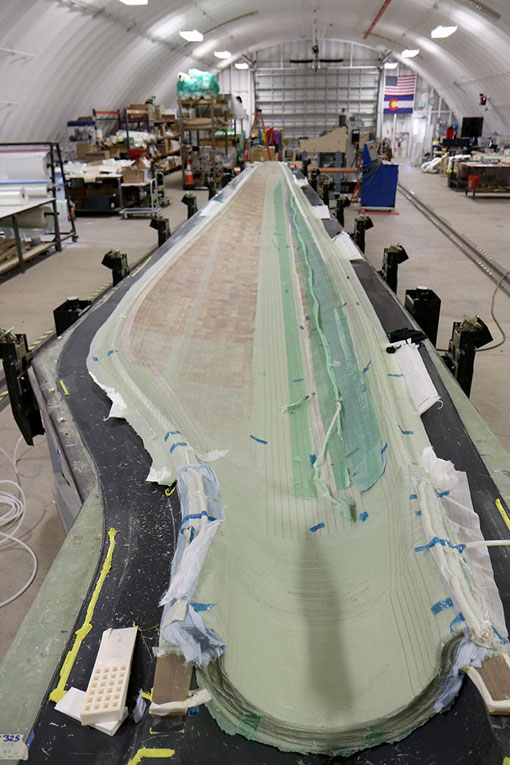
Using the Composites Manufacturing Education and Technology Facility, an NREL research team built a 13-meter thermoplastic blade to advance wind turbine blade manufacturing. Photo by Ryan Beach, NREL
Are you familiar with the CoMET? No, not a ball of ice and dust from space. The Composites Manufacturing Education and Technology—or CoMET—Facility supports materials and manufacturing research in wind energy and other renewable energy industries. Located on the National Renewable Energy Laboratory's (NREL's) Flatirons Campus, it's one of a handful of facilities in the United States with the specialized equipment and expert researchers to take materials and designs from theory to prototype and, eventually, manufacture a commercial-scale product.
Since its launch in 2016, the 10,000-ft2 facility has partnered with members of the wind energy industry to design and manufacture stronger, lighter weight, less expensive, and even recyclable wind turbine blades. Check out nine ways CoMET can bring ideas from theory to market through capabilities such as novel thermal welding techniques and additive manufacturing (better known as 3D printing) of molds for new wind turbine components.
For example, a team of NREL researchers led by Derek Berry, a senior wind technology engineer, is using CoMET to further its revolutionary combination of recyclable thermoplastics and 3D printing to manufacture advanced wind turbine blades. These innovations could reduce wind turbine weight and cost by 10% or more and production time by 15%.
Learn more about CoMET's capabilities.
Behind the Blades
National Lab Researchers Partner With GE Renewable Energy To Investigate Physics of Large, Land-Based Rotors
Designing wind turbines and determining where to site them in a wind power plant most often involves computer simulations. Mathematics, physics, and computational science come together to predict how a wind plant will respond to various wind and ground (or ocean) conditions. Current utility-scale wind turbines boast large, flexible blades that bend and twist in response to gusts and turbulence, yet correctly simulating the blade structural response to these short-lived and varying wind patterns can be a challenge.
As a wind energy researcher working on the overlap between atmospheric science and mechanical engineering, Paula Doubrawa gathers the field data needed to improve these simulation capabilities. With bachelor's and master's degrees in atmospheric science and a second master's and a doctoral degree in mechanical engineering, she is uniquely qualified to tackle these problems.
Paula Doubrawa blends her background in atmospheric science and mechanical engineering
to help improve wind turbine and wind farm models. Photo by Paula Doubrawa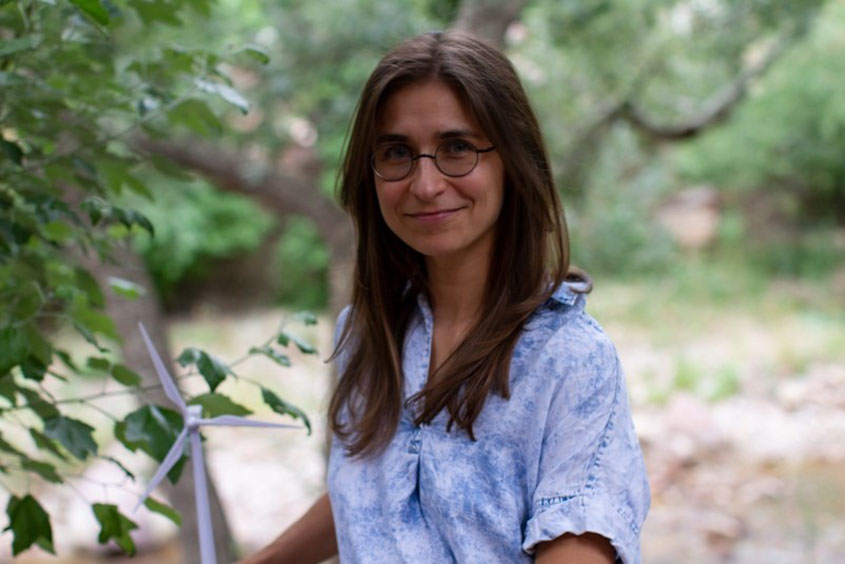
"We want to understand what a real wind turbine experiences and how it responds to wind. Then we can reproduce measured scenarios in a computational environment to evaluate how our models perform. If they're underperforming in any way, we can use the field data to guide model improvements," said Doubrawa, a Brazil native who joined NREL in 2017.
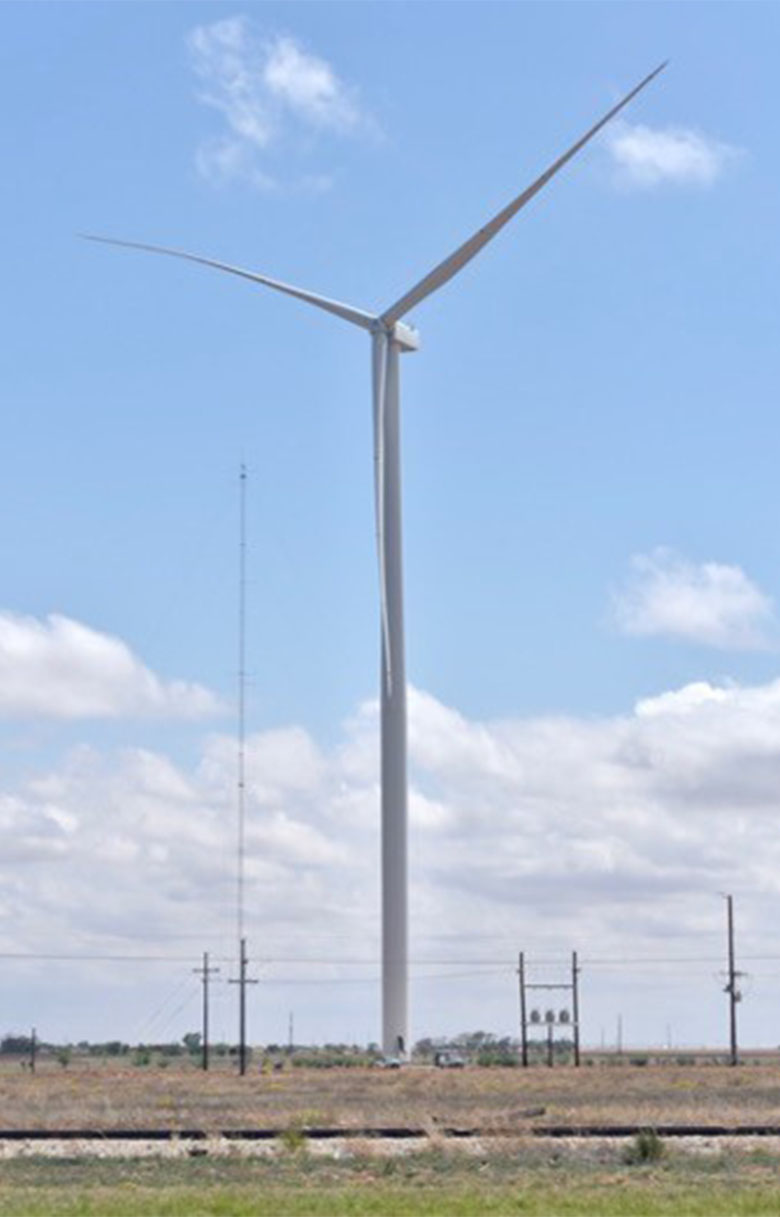
Now, Doubrawa and other researchers from NREL and Sandia National Laboratories are partnering with GE Renewable Energy to ensure that widely used computational tools can accurately simulate the behavior of ever-larger and ever-taller modern wind turbines. The team will collect detailed measurements of a 2.8-megawatt (MW) wind turbine in Texas as part of an experiment called Rotor Aerodynamics, Aeroelastics, and Wake (RAAW). The wind around the rotor will be measured with 18 sensors, and a high-resolution camera system will capture photos of the bending motions of the 200-ft-long blades. Ultimately, this comprehensive and unique dataset will lead to improved computer models and more efficient designs, helping the United States reach its renewable energy goals.
Doubrawa is looking forward to working on this project.
"A partnership like this—between the U.S. Department of Energy (DOE) and a key industry player—is mutually beneficial," she explained. "The national labs bring hardware, software, and expertise to enable our industry partners to tackle their specific research interests. Meanwhile, the labs gain inside access to a functioning wind turbine and its data, which we use to ensure our research is relevant to the actual machines deployed across the country."
Along with the rest of the RAAW team, Doubrawa just may help those machines become bigger and better than ever.
On the Radar
December Competitiveness Improvement Project Workshop To Detail Awards Process
Dec. 14–16, 2021
12–2:30 p.m. MT
DOE is planning to host a Competitiveness Improvement Project 3-day workshop that will provide wind manufacturers interested in applying to Competitiveness Improvement Project solicitations with an overview of the process, evaluation criteria, certification requirements, and NREL's technical support opportunities.
Workshop and registration details forthcoming. To learn more, email NREL's distributed wind lead, Ian Baring-Gould.
Upcoming Wind Energy Webinar – Offshore Wind Technology Above the Water
Dec. 1, 2021
12–1 p.m. ET
In this webinar, hosted by DOE's WINDExchange initiative, NREL offshore wind energy expert Walt Musial will discuss above-water offshore wind energy technology, including wind turbine technology and wind resource assessments and modeling.
DOE's webinar registration will open soon.
Downwind: In Case You Missed It
Atlantic Offshore Wind Transmission Study Launches
DOE's Wind Energy Technologies Office has announced the launch of a comprehensive study of transmission options to support offshore wind energy development on the U.S. East Coast through 2050. To meet the objectives of this new study, researchers from NREL and the Pacific Northwest National Laboratory will evaluate multiple pathways for reaching offshore wind goals through coordinated transmission solutions with various combinations of electricity supply and demand and while supporting grid reliability and resilience and ocean co-use.
Video Highlights Wind Turbine Composite Research for Manufacturing Day
NREL's CoMET Facility partners with the wind industry to design stronger, lighter weight, less expensive, and even recyclable wind turbine blades. "The CoMET has already played a critical role in advancing research in both the wind power and the water power industries," said Derek Berry, a senior wind technology engineer at NREL. For Manufacturing Day (Oct. 21, 2021), NREL released a new video about these manufacturing innovations, which featured several wind energy researchers as well as National Wind Technology Center Director Daniel Laird. Take a 360° virtual tour of NREL's facility.
NREL Open-Source Software Wins R&D 100 Award
Two NREL innovations have won R&D 100 awards from R&D World. One of those groundbreaking technologies, Distributed Generation Market Demand (dGen™), is an open-source software that simulates customer adoption of distributed energy resources, including wind energy, through 2050 in the United States. An updated version of the software will soon launch. dGen is supported by the Wind Energy Technologies Office and Solar Energy Technologies Office within DOE's Office of Energy Efficiency and Renewable Energy.
NREL Wind Energy in the News
Like Oil and Natural Gas, Plastics Are Integral to Our 21st Century Lives
A Forbes article on plastics cited an NREL review on the cost of wind energy from 2015 that estimated 11%–16% of wind turbines are made of plastic. If you read the featured news article in this newsletter, you'll see that researchers at NREL are working to improve wind turbine recyclability!
Orbital Composites Installs Robotic Manufacturing System at NREL
An article about a new robotic arm installed in NREL's CoMET facility by Orbital Composites was posted by 3D Printing Media Network. The arm will be used to expand automation research, improving NREL's wind turbine blade-finishing research capabilities.
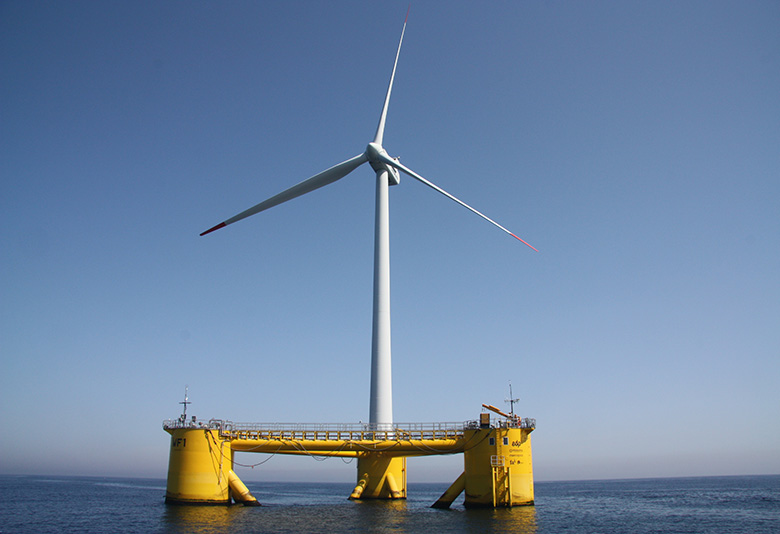
Offshore wind farms could provide over 2,000 gigawatts of generating capacity in the United States according to a 2016 NREL technical report. The Agucadoura Wave Farm, pictured here, is located off the coast of Portugal. Photo by Senu Sirnivas, NREL
Biden Calls for a Big Expansion of Offshore Wind Energy – Here's How Officials Decide Where the Turbines May Go
An article posted by The Conversation references 2016 NREL technical reports estimating that U.S. offshore wind resources could provide over 2,000 gigawatts of generating capacity (twice the electricity use of the nation, according to the article).
Power Companies' Plans To Expand Wind and Solar on the Eastern Plains Meet Local Headwinds
A 2019 NREL report on wind energy economics is referenced in a Colorado Public Radio News article regarding potential financial benefits to installing wind turbines on farmland.
Fact-Check: Do Wind Turbines Cost More To Build Than the Energy They Produce?
Referencing a 2013 NREL fact sheet on wind life cycle assessment harmonization, the Austin American-Statesman evaluated whether wind turbines have energy payback for their cost. They do, the article decided.
Recent Publications
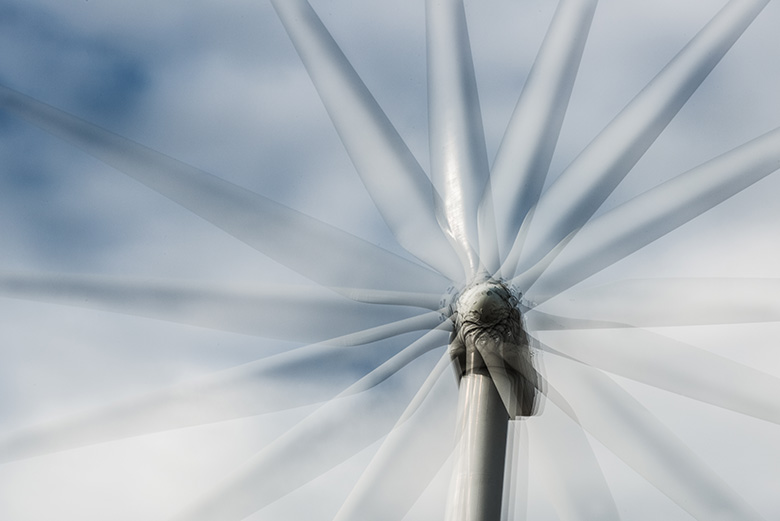
NREL researchers are identifying what causes—to ultimately minimize—white etching crack bearing failures in wind turbines. Photo by Dennis Schroeder, NREL
WhiteWind: White Etching Crack Bearing Failures in Wind Turbines; Cooperative Research and Development Final Report
Wind turbines require unique components. When one fails, it can be time-consuming and costly to fix or replace it. As described in the WhiteWind Cooperative Research and Development Final Report, white etching crack (WEC) bearing failures in gearboxes are considered to be one of the most common. The objective of a project led by the Technical University of Denmark was to develop a new material with industry partners that would be resistant to WEC failures using novel surface engineering techniques. With the help of the DOE-initiated NREL Drivetrain Reliability Collaborative and NREL principal investigator Jonathan Keller, the team was able to analyze a 1.5-MW wind turbine drivetrain under a wide range of operating conditions over a 4,200-hour duration, taking load, speed, turbine, and meteorological measurements. These data were then modeled and used to validate new aeroelastic simulations of the turbine and its gearbox and bearings. The team developed additional analytical roller slip models, the predictions from which were compared to measured results for validation. As a result of this study, the team was able to identify a new hypothesis for WEC failures: the magnitude of the inner raceway normal contact load at the time of roller slip. This knowledge could help the team design new bearings and prevent WEC failures in the future.
OC6 Phase Ib: Floating Wind Component Experiment for Difference-Frequency Hydrodynamic Load Validation
As a base for offshore wind energy platforms, the ocean, with its waves and currents, creates unique challenges in understanding the behavior and performance of these systems. The hydrodynamic loading on offshore wind substructures is different from any other offshore structure, and to better understand this, two NREL researchers took advantage of the unique wave tank at the University of Maine's W2 Harold Alfond Ocean Engineering Laboratory as part of the Offshore Code Comparison Collaboration, Continued with Correlation and uncertainty (OC6) project. The tank is able to generate ocean waves, including bichromatic ones, which enabled the researchers to examine how waves interact with design components of a floating wind energy semisubmersible, especially at its natural frequencies, which drive the dynamic loading in the system. This work, part of Phase 1b of the International Energy Agency's OC6 project, helped verify and validate the load predictions of coupled modeling tools, including identifying how wave uncertainty affects extreme and fatigue loading limits. The acquired dataset, which is available to the public on the OC6 website, can be used to validate numerical models to computationally test—and improve—offshore wind energy substructure designs.
Wind Plant Performance Prediction Benchmark Phase 1 Technical Report
The financial risk associated with developing, owning, and operating wind power plants remains a barrier to reducing the levelized cost of energy for wind. To help reduce this risk, NREL orchestrated the Wind Plant Performance Prediction project, an industrywide data-sharing initiative. Through this multiyear effort, NREL gathered preconstruction and operational data from over 15 industry partners, producing an independent benchmark of annual energy production; released the Open Operational Assessment, or OpenOA, open-source operational analysis software; and studied historical trends of the energy prediction bias. In the Wind Plant Performance Prediction Benchmark Phase 1 Technical Report, the research team summarizes the results and lessons learned from Phase 1 of this project, as well as the infrastructure, methodology, and tools NREL developed to facilitate this initiative.
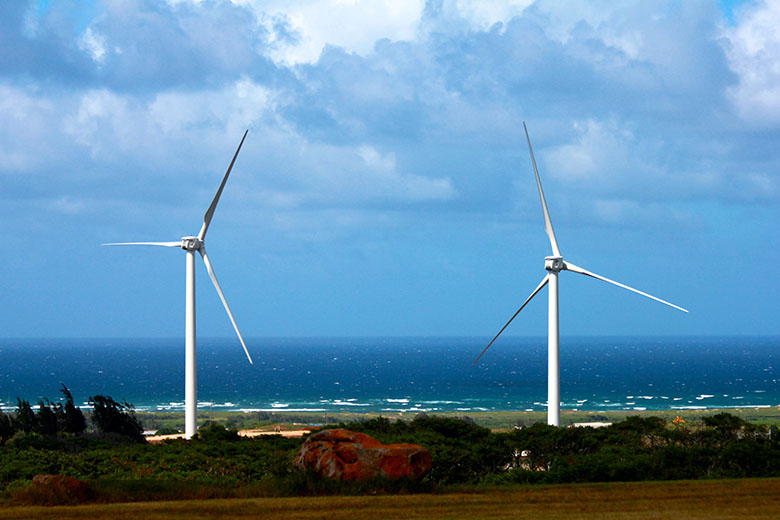
The Kahuku Wind Farm in Hawaii is helping the island reach clean energy goals. The Bureau of Ocean Energy Management has contracted NREL to study the viability of adding floating offshore wind energy as a part of its portfolio. Photo by Adam Warren, NREL
The Costs and Feasibility of Floating Offshore Wind Energy in the O'ahu Region
The State of Hawaii has set a target to achieve a 100% renewable portfolio standard by 2045 and is well suited to become the first state to achieve this goal because of its relatively small load and favorable conditions for wind and solar resources. The Bureau of Ocean Energy Management contracted NREL to study the viability of floating offshore wind as a part of this target. The research team evaluated the levelized cost of energy in the region surrounding O'ahu and found that costs could decrease to a range of $48–$109 per megawatt-hour by 2032 if sufficient technological advancements and infrastructure investments are made, which is comparable with offshore wind energy costs in California. The team summarized their results in a technical report titled The Costs and Feasibility of Floating Offshore Wind Energy in the O'ahu Region.
Numerical Investigation of Wind Turbine Wakes Under High Thrust Coefficient
Wind turbine wakes behave differently in high-thrust conditions—in which the force against the wind is much stronger than that during standard operating conditions. High-thrust wakes demonstrate increased turbulence, which enables the wake to recover more quickly and allows downstream turbines to capture more energy than usual. In the Numerical Investigation of Wind Turbine Wakes Under High Thrust Coefficient article, NREL researchers collaborated with Sandia National Laboratories and Siemens Gamesa Renewable Energy to explore the mechanism behind this wake behavior and propose a simple model for reproducing it. This model could be useful to wind farm operators as a wake mitigation strategy.
Share

